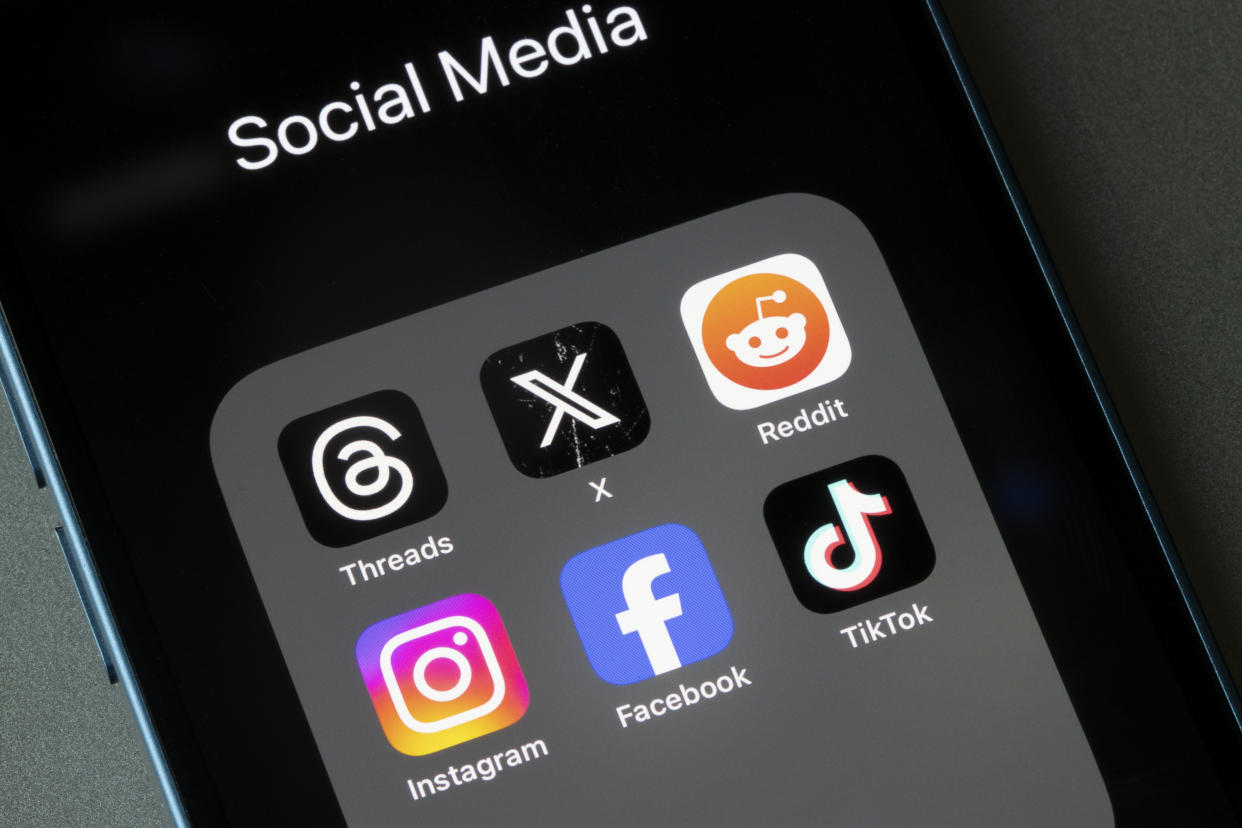How to spot misinformation on social media

Social media can be a great place for people to learn and connect with one another. However, in recent weeks, it has become more difficult to navigate and differentiate between what’s real and what isn’t.
Experts have dubbed the rapid spread of false, misleading and manipulative information - also known as ‘fake news’ - as ‘the age of misinformation’. The rising popularity of artificial intelligence (AI) has added fuel to the flames of misinformation, and is making it harder to decipher the truth.
Britons have been facing the consequences of rampant false information that spread quickly online since the mass stabbing that occurred during a holiday dance class in Southport on 29 July, which resulted in the deaths of three young girls.
Following the attack, riots have broken out across England. The unrest was fuelled by false information that spread on social media about the attacker’s name and identity. The viral posts falsely claimed the attacker was a Muslim migrant who entered the UK by crossing the Channel on a small boat.
Home Secretary Yvette Cooper said on Monday 5 August - following a weekend of violence that saw over 400 arrests - that social media platforms "put rocket boosters" under "misinformation [and] the encouragement of violence".
Prime Minister Keir Starmer has also condemned the riots. He guaranteed that those who participated in the violence "whether directly or those whipping up this action online and then running away themselves" will "regret" doing so.
Elsewhere, misinformation has also played a part in the gender controversy against Olympic boxers Imane Khelif and Lin Yu-Ting. Both boxers faced false claims that they were men or transgender, including comments from public figures like JK Rowling and Donald Trump.
Three types of false information you need to know about

There are three types of false information that are commonly spread online. They are:
Misinformation: Fake news that is created and spread by people who don’t realise it is false
Disinformation: Fake news created and spread by people who know it is false and intend for it to cause trouble
Malinformation: Information that is based on fact but removed from its original context in order to mislead, harm and manipulate
In order for individuals to begin identifying misinformation and verifying what they see online, there are two crucial skills to acquire, according to Caroline Carruthers, data expert and co-founder of global data consultancy Carruthers and Jackson.
These skills include critical thinking and digital literacy. Many people need help acquiring these skills and it can be hindered by how we tend to say in "information bubbles" without realising it, Carruthers explains.
"A lot of people don't really understand how the algorithms in social media work. They feeds us things they think we want to see, hence why we’re in an information bubble," she says.
"It makes it pretty easy for someone who’s trying to feed us misinformation, because the simplest way of doing it is to drop in something that looks similar to something we would normally read, but then it takes us off in other directions."
Vonny Gamot, Head of EMEA at online protection company McAfee, adds: "Combatting disinformation requires a concerted effort from individuals, media organisations, tech companies, and governments to promote media literacy, fact-checking, transparency, and responsible information sharing.
"What's most important is that consumers are armed with the capabilities to tell fact from fiction, and that they themselves take a moment to pause and verify information before sharing anything online."
How is false information created and consumed?

There are many reasons why ‘fake news’ gets disseminated on social media platforms. One reason, Carruthers says, is that the creators are trying to get access to an individual’s personal information.
"They’re trying to get us to click on something which would give them back door access into the stuff we’re reading or looking at, or into our banking information. So it’s for nefarious means."
Another reason is that the creator is trying to get readers to "think in a different way". "So, depending on your political views, you could say, ‘Are you trying to inform me or are you trying to misinform me?’"
Gamot adds: "Much of this disinformation is consumed passively as people scroll through reams of content, so it’s often absorbed and accepted without meaningful interrogation.
"I think the increase in disinformation that we’re seeing is quite simply down to the ease of sharing content online. Social media channels are all incredibly accessible and easy to use, and they allow information whether accurate or not, to be spread to a global audience, fast.
"Recent advances in AI have also created an environment where fake news can be created and distributed even more rapidly, and it’s getting harder and harder to discern what’s real and what isn’t. In fact, a McAfee study found that just one in five Brits find it easy to spot AI-generated content such as fake news and scams on social media."
Because of the information bubbles we live in, social media platforms are more likely to serve up content that’s "aligned to things that we already believe", making us prone to confirmation bias, Carruther says.
"People really must ask themselves if what they see online is telling them the truth or just pushing them in a certain direction."
How to spot false information online
Be aware
The first step to being able to recognise misinformation is to be aware of your online world, Carruthers advises. "Being aware that there are information bubbles, reading up on what’s possible, understanding what clickbait is, what deep fakes are - these are important ways to increase your digital literacy.
"Educate yourself on the types of scams out there and have a look at examples of things that have been deliberately misspelt in an effort to deceive you. Some people that are trying to misinform you can literally misspell one letter and put an ‘e’ where an ‘a’ would be and your mind might not pick it up - so be very, very careful."
Always verify
Both Carruthers and Gamot also encourage people to verify sources before sharing information. You can do this by cross checking information with multiple different sources. "If it’s coming from just one source, it’s probably not true," Carruthers says.
Make use of fact-checking tools, such as Full Fact, and check reputable news sources to validate information before passing it along to your friends and family.
Look at details
When it comes to discerning if AI is involved, Gamot advises people to be cautious of distorted images, as fabricated images and videos aren’t perfect. "If you look closely, you can often spot the difference between real and fake. For example, AI-created art often adds extra fingers or creates faces that look blurry," he explains.
"Listen for robotic voices. AI voices often make awkward pauses, clip words short or put unnatural emphasis in the wrong places."
Pause before sharing
A lot of misinformation relies on clickbait-style headlines and emotionally charged content designed to make readers feel a certain way, so that they are motivated to share it.
"If you see a post or ‘news report’ that makes you incredibly angry or very sad, step away," Gamot says. "Much like phishing emails that urge readers to act without thinking, fake news reports stir up a frenzy to sway your thinking."
Read widely
Increase your digital literacy and knowledge by pushing yourself out of your information bubble, Carruther says. "Read things you wouldn’t necessarily read otherwise just to try and get a different side of the story."
She adds: "People should be able to go online, connect with their friends, read the news, and stay informed. But I want them to do it safely, and there is a lot of manipulation going on at the moment. Being cautious is the best way forward."
Watch: Starmer vows full legal action to end violent UK protests
Read more about online safety:
How to protect children online as a quarter of 5-7 year olds have a phone (Yahoo Life UK, 6-min read)
When should children be on social media? Penelope Cruz brands it a 'cruel experiment' (Yahoo Life UK, 6-min read)
Princess Eugenie opens up about fears of being 'trolled' on social media (Yahoo Life UK, 5-min read)


